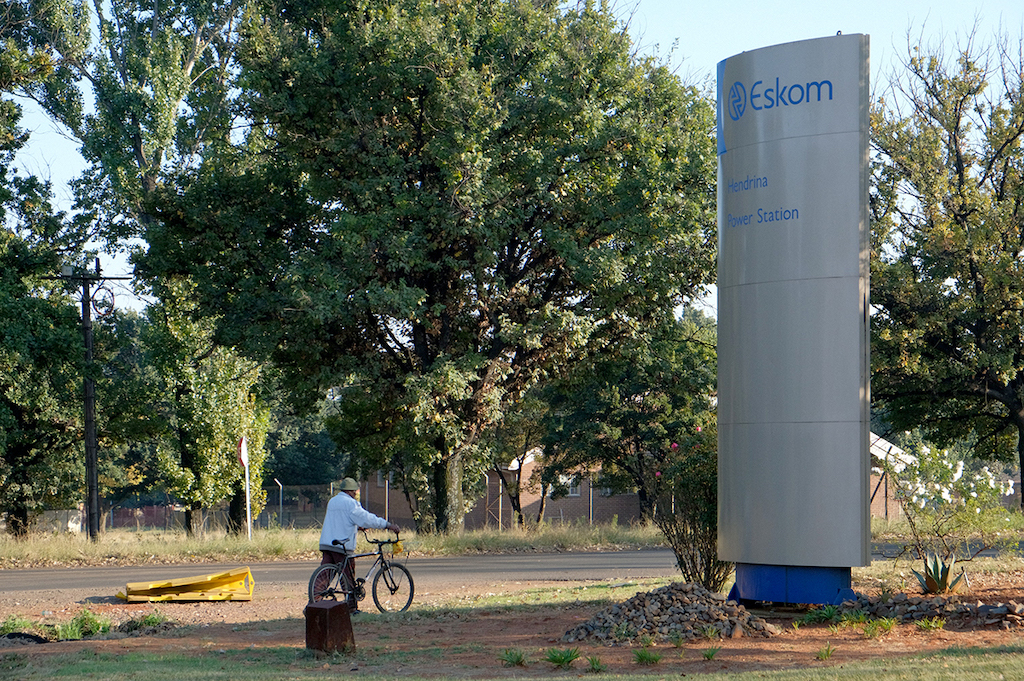
22 May Rating SA’s transparency on clean energy
#PowerTracker rates South Africa’s transparency on renewable power agreements, after spending the past five months tracking down the data. Andiswa Matikinca reports

No easy feat: Andiswa Matikinca is part of the #PowerTracker team building a dossier of data on renewable energy project operating in Mpumalanga. Photo: Dianah Chiyangwa
South Africans are waiting for the next rounds in the procurement process for renewable energy to be announced by the government, amid ongoing load-shedding and confusion around funding pledges for the renewables roll-out.
To date, 6,200MW of renewables are available on the grid under the Renewable Energy Independent Power Producer Procurement Programme – and just one project is based in Mpumalanga province, the energy capital of the country. (See our investigation Where are Mpumalanga’s new energy projects?)
Our Mpumalanga #The PowerTracker project has been building a dossier of data on renewable energy projects operating in the province, and it has been no easy feat. Most places where you would expect the data to be easily accessible have either not been updated, or do not include information other than what has been provided by the Independent Power Producers (IPP) Office.
A limited number of private energy projects under 1MW are shared by the Mpumalanga Green Projects Map. The launch of the JustSA initiative in March promised to catalyse larger renewable projects in the province, but so far no information has been forthcoming on how the €15-million (about R290-million) funding from the German government’s International Climate Initiative will be spent.

A ride to nowhere: Our efforts to get details about power purchase agreements have been stonewalled. Photo: Dianah Chiyangwa
Power purchase agreements
In the first quarter of 2023 the National Energy Regulator released a database of registered electricity generation, disclosing 4,130MW of solar PV and 200MW of wind projects based in Mpumalanga. However, details about these projects and who they have entered into power purchase agreements (PPAs) with has not been made available. PPAs regulate the sale of energy between the IPPs and state entities or private off-takers of the energy generated.
Reaching out to the IPP Office for details proved fruitless as we were told it was not able to provide information on agreements with private parties, and PPA documents are considered confidential. Staff at the IPP office said details such as the legal, technical, financial and economic development requirements included in the IPP bidding evaluations are not shared after a bidding window has closed.
We also wanted to dig into the land lease agreements Eskom has signed with four IPP investors, involving just over 6,000ha around Medupi power station in Limpopo and Tutuka station in Mpumalanga. These agreements are for the commercial lease and use of land parcels where there is sufficient grid capacity to supply a combined capacity of 1,800MW of renewable energy.
In communications with Oxpeckers earlier in the year, however, the Eskom media desk said details of the agreements entered into with the IPPs in the land lease programme could not be made publicly available because they contain sensitive information, such as pricing (market rentals) and the IPPs’ details.
Transparency scorecard
According to PPA Watch, an initiative of the Energy for Growth Hub, South Africa has a score of 5.5 out of 10 points and is considered “partly transparent” when it comes to publicly available information on power-sector contracts.
PPA Watch shares information on power contracts and advocates for greater contract transparency to help deliver cheaper, cleaner and more reliable electricity to people and businesses everywhere. The platform provides a global log of how countries are faring with regards to the transparency of green energy contracts by scraping multiple sources for publicly available information on power sector contracts.
The criteria PPA Watch used to reach these scores answer the following questions:
- Are the signing of PPAs publicly announced?
- Are basic details (name, location, technology, dates) disclosed?
- Is the award process clear?
- Are the parties and signatories disclosed?
- Is the amount of government finance and/or guarantees disclosed?
- Are investors disclosed?
- Are the ownership and shares disclosed?
- Is the pricing or pricing formula available?
- Are special terms, clauses, termination costs, or other payments disclosed?
- Are the PPA contracts published?
PPA Watch states that the non-disclosure of these contracts and agreements leads to the slow deployment of renewable energy projects and stifles competition in the sector, which could result in more expensive and less reliable power.
Based on these criteria, our #PowerTracker rating after tracking down data on contracts and agreements in Mpumalanga over the past five months has to be lower than that of PPA Watch – a score of 3.5.
As more renewable energy projects slowly come on to the grid in the province, the signing of PPAs is publicly announced and the basic details of these projects are shared – but we are still in the dark about contract arrangements such as those rated by PPA Watch, and about important criteria such as shareholder information, funding mechanisms, and social, environmental and governance plans.
Andiswa Matikinca is an associate journalist and data manager of the Oxpeckers #PowerTracker programme, supported by the African Climate Foundation’s New Economy Campaigns Hub
